How to Buy a Business (With No Money Down)
5 (Steps by Step ) Strategies You Need to Know to Buy a Business Without Using Your Own Money

Today you’re going to learn exactly how to buy a business with no money.
Yes, you’ve heard me right!!!!
I’m going to show you how buying the RIGHT business will make you UBER wealthy…
…because you’ll have a PROVEN business that generates MONEY from day one – without risking a penny of your own money!
Why would you want to start a business or buy a franchise when you know how to buy a great business without risking a penny of your own money?
And the best part?
I’ll share with you a proven strategy, STEP BY STEP, that shows how buying a business can earn you $5,000,000 in just four years…
Let’s get started.
The Bitter Truth…
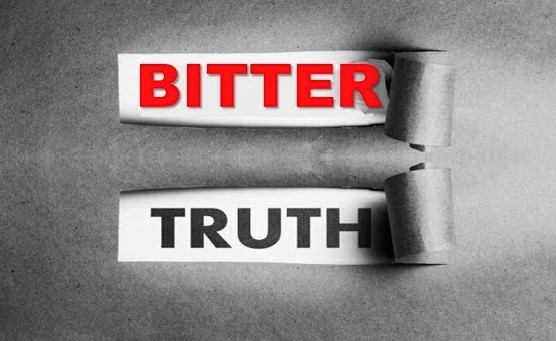
Before we dive in, let’s look at why starting a business and growing a business (SME) the organic way is a mug’s game.
Want to know why?
- The odds aren’t stacked in your favor.
- It takes a lot of time before you make any money (real money).
I mean, the odds aren’t exactly in your favour. According to Michael Gerber (author of the E-Myth and E-Myth Re-visited), at least 40% of new businesses will fail within their first year and 80% within five years. Do you really want to put yourself through all this?
Would you play a game with your life savings with these odds?
Would you invest in stocks and bonds with these risks?
Would you buy property with this downside?
I didn’t think so…
Now, I know what you are thinking… “OK, Shane, I hear you, but what about the financial upside?”
So… how much revenue does a typical SME small business generate? We researched this, as shown in the diagram below. Now, this is annual turnover, not profit. If you assume a 15% gross profit margin before tax, it certainly doesn’t make for pleasant viewing.
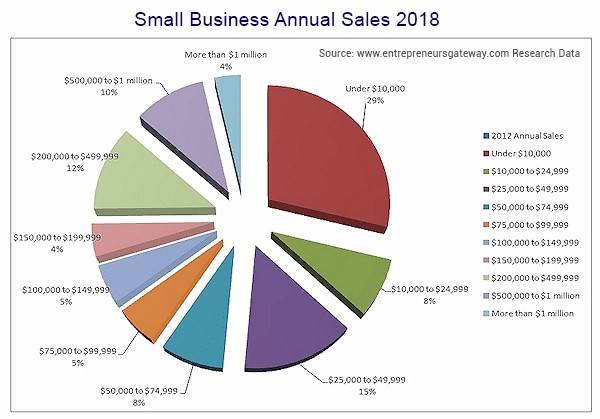
What if I were to tell you that the risk-to-reward ratio could be tipped in YOUR favor; that YOU could learn what lots of seasoned entrepreneurs already know and be able to double – no, MULTIPLY BY 10, your profits… in 90 days?
You’ll fast forward yourself 10… 20… 30 years in the future and save yourself all that time running, testing and growing a business…
Sounds too good to be true, doesn’t it…
I’ll show you how you can BUY an established, well run, profitable business that is already making significate profits while NOT using a penny of your own money.
Let’s dive in…
This guide will teach you everything you need to know (Step by Step!) on How to #Buy a Successful #Business Without Using 1 Cent of Your Own Money!
Shane Stamford Tweet
Myth 1: You can get wealthy by running a business.
The business owners that work hard rarely become wealthy… We’ve proven this in the research above.
The business owners that make the real wealth are the ones that buy businesses to grow, expand and sell – and do it again and again.
Look at these well-known entrepreneurs. How did they become rich?
They became rich when they sold their businesses or acquired and sold another business.
Sir Richard Branson
Sir Richard Branson began with a start-up capital of £300 and made his money by selling Virgin Music to Thorn EMI for £510 million. The day before this, he has admitted that he was borderline insolvent.

Lord Ashcroft
Lord Ashcroft began with a £15,000 bank loan then went on to sell his company three years later for £1.3 million. Since then, Ashcroft’s fortune has come from various sources including selling home security giant ADT and back in 2011 he sold The Priory Clinics for £924 million.

Lord Sugar
Lord Sugar began with an initial start-up of £100 which he used to purchase car aerials and electrical goods out of a van. He founded Amstrad in 1968 which he sold for £125 million in 2007.
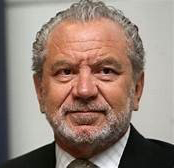
Philip Green
Philip Green became the owner of the Arcadia Group back in 2002 for virtually next to nothing. It then became a private company and was de-listed from the London Stock Exchange. He went on to pay himself the largest dividend in history of £1.6 billion pounds.
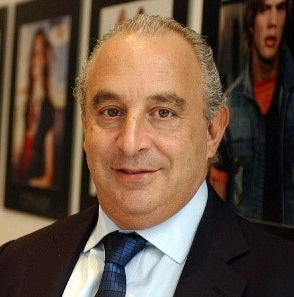
Andrew Carnegie
Andrew Carnegie was the richest man in the US after he sold his company, Carnegie Steel, to JP Morgan for $250,000,000 in 1901. He subsequently then retired and devoted himself to his philanthropic activities – which were themselves fairly vast.

Melvyn Morris
Melvyn Morris began with a handful of businesses including a Spanish property group and dating agency. When he sold uDate in 2002, he established King, the British and Swedish games studio behind the smartphone game Candy Crush.

Sukphal Singh
Sukphal Singh was a refugee from Idi Amin’s Uganda. When he was 18 years old, he borrowed £5,000 to start Euro Car Parts and landed a £225million fortune after selling the company to Chicago-based LKQ Corporation.
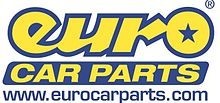
How and why you can buy a business with no money down
Now that we have dealt with the myth you’ve been led to believe by the so-called gurus out there (that is, that starting a business and growing a business (SME) the organic way is the way to financial utopia), let’s find out how and why you can buy a business with no money down.
Would it surprise you to know that 2.9 million businesses will be for sale within the next year, with only 1 in 13 being successfully sold… leaving 2.6 million still available??!!
This means that it’s a never been such a good time to consider becoming your own boss.
But why start a business up from scratch? Why suffer all the pain and stress that comes with it?
Starting your own business can pay fantastic dividends, but it is imperative to understand the associated risks.
By PURCHASING an EXISTING business, the risk is significantly reduced, not to mention a lot less painful!! This is a proven concept because, as a buyer, you already know that the business and processes work.
The first five years of a new business are extremely difficult – making money is nigh on impossible. However, by buying a business, you are already at that point; you’ll have bypassed the slow and hard first five years.
There are several reasons why you need to consider purchasing an existing business, rather than starting one up from scratch, these include:
Brand: You’re buying the brand name – it’s already out there, meaning all the hard work is done. This makes attracting new business a lot easier and quicker.
Relationships: The business has an existing customer and vendor database, meaning that all the groundwork is already done.
Focus: Because the seller has laid down the foundations and taken care of the often tedious and time-consuming start-up work, all you need to do is to focus on improving and growing the business.
People: Of course, during an acquisition, one of the most important and valuable assets that you can purchase is a fully operational pool of staff. These are employees that the seller took the time to find, develop and assimilate into the culture of the company. By having trained staff in situ, you will be able to focus on other business ventures.
So, as previously mentioned, quite often smart entrepreneurs will favor buying an existing business rather than starting up a new one.
But what about financing the purchase of an existing business?
Not having enough cash to buy the business needn’t prevent you from buying it, as long as you have the perfect no money down business acquisition strategy. Over the last few years banks have tightened their commercial lending standards; however, it is still viable to raise the necessary funds to purchase a business without using your own money.
Motivation
In this section, we’ll be looking at the motivation behind why people may consider selling their business.
Recent analysis has shown that:
- 45% want to transfer the business into a ‘safe pair of hands’ (quite often businesses were set up by the baby boomers, and nowadays millennials have no interest in carrying them on)
- 18% want to safeguard employees
- 15% want cash at closing
- 10% for relief and retirement
- 6% for cash eventuality
- 6% for other reasons
You may be asking, but WHY are there willing sellers?
Well, reasons include:
- Poor financial performance
- Retirement
- Evidence of spin-offs
- Evidence of other write-offs
- Recent large subsidiary sale
- New leadership
- Announced new strategy
- A recent big exit
- Raising new funds
- Other investments >4 years
- No succession
- The owner is tired and frustrated
- Illness/death
- A new market perspective is required
96% of business start-ups fail within 10 years. Why would you want to take those odds?
So, to begin with, YOU need to find out what sort of business YOU want and what you are looking to achieve.
Remember you should never buy a business for a job – a business should be bought to work ON not IN.
Shane Stamford Tweet
The important thing is to be honest with yourself. What are your skills? And more importantly: what are your weaknesses? Understanding what your weak points are will put you in better stead when building your team.
Your team should include a:
- Financier
- Accountant
- Good Lawyer
- Broker (only if you need one)
- Management team (to cover any weaknesses).
Step-by-Step Guide
Below is my step-by-step guide which covers locating a business, purchasing it, and how any additional expenses can be covered.
In the first step, you will learn how to find and choose the right business – and specifically: the right way to approach owners and the perfect time to make an offer.
Step 1. Choosing the right business
In this section, we look at the four pillars for how to choose the right type of business/sector for YOU to buy.
Following these four steps and my financial modeling, I’m going to show you how you can buy a business with no money and make $5,000,000 in just five years…

Without stating the obvious, choosing the right business is critical if you want to be successful. In order of importance, here are the Stamford Four Pillars to choosing the right business.
- Passion
- How much money you want to make
- Sector
- Location
Passion
I’ve been a successful entrepreneur for more than 30 years, and have started, bought and invested in several businesses.
So, what is the single #1 driver of my success?
Well, it’s PASSION.
Running a business is hard, very hard – the late nights, the early mornings, dealing with staff, managing cashflows, being away from your family… You get the idea, right?
If you’re not passionate about what you do, you’re not going to do what you need to do too.
SIMPLE!!!
When things get tough, without passion, it’s just far too easy to give up.
When you are passionate about your business, you can overcome any adversity and learn things you didn’t want to learn. If you are passionate about your business the things you once disliked about business, then become your friends.
How much money do you want to make?
In this section, we’re going to look at how you can fulfill your personal financial goals.
You’ll learn exactly how anyone can buy a business with no money down and earn $5,000,000 in 4 years.
Myth 2: You don't make money running a business you make money selling a business.
We’ve all heard the saying: if you fail to plan, you plan to fail… Yet most business owners don’t have a business plan – let alone a personal one. So many business owners I meet don’t have a strategy to act on.
I’ve always said that I can show anyone, no matter their background or education, how to make $5,000,000 in 4 years with the Stamford Business Acquisition Formula.
So, let’s begin by assuming your goal is to acquire $5,000,0000 of wealth over four years.
You acquire Acme using the Stamford Business Acquisition Formula, starting from day one when you receive an upfront deal fee of $250,000.
Over the next three years you pay yourself a salary of £250,000 and in year four you exit for £4,000,000, as shown below:
- Money on completing the deal $250,000
- Salary year 1 $250,000
- Salary year 2 $250,000
- Salary year 3 $250,000
- Exit (sell the business) $4,000,000
- Total $5,000,000
If this is your goal, we need to look for the right type of business to acquire. So, let’s look at the strategy needed by looking at our outcome and work backward:
Despite what you are led to believe, 99% of all SME business sales are valued on an EBITDA basis – a multiple times operating profit.
If we assume a five times valuation multiple to achieve our exit goal of $4,000,000 assuming a 15% margin, we will need sales revenues of $5,333,000.
Still working backward, if you think you can increase sales revenue by 33% each year (which, if you use the Stamford growth models, will be easily achievable), you then need to look for companies today to acquire $4,000,000 in sales revenue.
Phew… That’s the maths over with.
Now, do you see how important it is? If you want to achieve your financial goals, you need a strategy and must acquire the right business or businesses to achieve this.
Using the Stamford Business Acquisition Formula, you can definitely do this. But trying to do it by either starting a business or growing your current business will take you years and most likely end in failure. This is why you need to learn how to buy a business with no money.
Why do you think all the big companies use this same model to grow?
“I was vehemently against acquisitions. Now let’s buy everything in sight. Well, that’s a slight exaggeration. We are a little more strategic than that. But everything was on sale.” – Larry Ellison
Let me ask you three simple questions, and be honest with yourself:
- Is your current business or the business you are going to start likely to achieve your personal and financial goals?
- If it is, what time scale will it likely be?
- Are your limiting beliefs holding you back?
If you answered yes to any of these questions… you need to join our free training and learn how to buy a business with no money down.
Sector
Let’s dispel this myth before we move forward:
You DO NOT need to know anything about the sector or industry of the business you are buying… providing you are using the Stamford Acquisition Formula.
That said (and I revert back to ‘passion’), if you are passionate about a sector or are an expert in a particular industry, I strongly recommend that for the first 2-3 deals you stick to these areas, even if you’re aim is to ‘flip’ the business to turn a profit. Remember, you will be running and growing this business for a fairly long time. Working out out what you want will help enormously in identifying a business to purchase.
Once you have completed the first 2-3 deals, the industry will be irrelevant – it will be all about whether the deal stacks up. If you want to find out what the ‘right deal’ is, join me on my free training and we can go more in depth. You can click here.
Assuming you are going to take my advice and stick with what you know for your first few deals, ask yourself this:
- What experience do you have?
- What are your skill sets?
- What is your sector knowledge?
Experience (or Dream Team) + passion = success.
I’m not going to cover the Dream Team here, but if you would like to know more click here for my free training.
Location
Choosing the location is self-explanatory, so I won’t go into too much detail. However, a few things to consider are:
- Is the new business commutable?
- Will you need to move? or
- Will you have to stay over?
If you are buying a business to bolt onto your existing business to exponentially accelerate your growth, then you need to decide whether to merge the business into your current premises, keep it where it is, or move your business into the new premises. Here are things to consider if adding an additional location:
- Will a new location help with your distribution and fulfillment?
- Will adding an additional location enable you to attract more customers?
- Will a national presence help with growth?
- You may want to choose a location that is convenient for your customers, employees, and suppliers.
Other factors worth considering, are labor and premises costs and business rates. It may be worth moving your current business into the new one or vice versa to reduce costs.
Stamford Rule: 2 + 2 = 6
If you acquire more than one business and merge them, you will always save on costs which in turn increases profits. One such way is merging them into the same premises.
ANYONE, no matter their background or education, can learn how to make $5,000,000 in 4 years. Learn how here – 100% FREE!
Shane Stamford Tweet
Step 2. Finding the Right Type of Business to Buy with No Money
In this section we will dive into how to find the right type of business to buy. I will cover:
- Sweet Spot
- Approach
- Avoid
- Motivated seller
- Timing
You’ll learn what the sweet spot is, what businesses to avoid, and why and how to find a motivated seller (you’ll be surprised by this one!)
Let’s dive in…
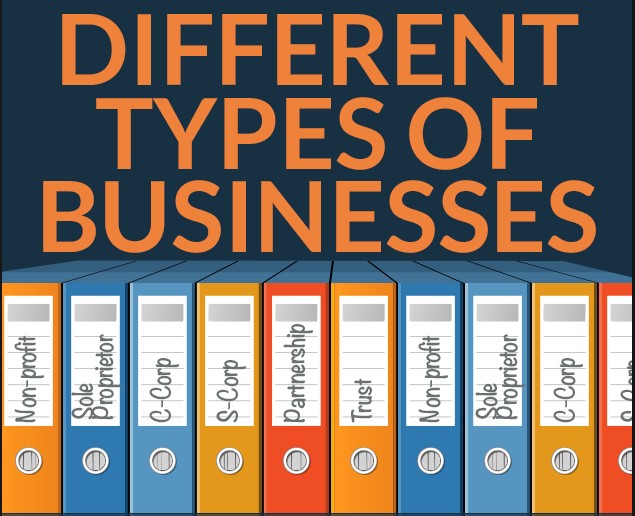
Sweet Spot
If it’s your first deal, you want to be looking for businesses with turnovers between 500k to 5 million.
If you want to find out why these are the perfect businesses, then come along to my free training, you can click here to join – AND it’s 100% FREE!!
Approach
First, identify businesses owners who are looking to exit. Investigate local owners and their businesses to give you an idea of what is available. Usually, the best option would be to find an owner who is either ready to start a new business venture, or who is looking to retire – the latter being more preferable, as they have more motivation in getting the business sold quickly. There are various avenues that can be explored when locating an acquisition, including:
- The direct approach – Contact the business owner directly, either in person or by post.
- Using free tools on the Internet such as Companies House, Hoovers, Data Connect or LinkedIn, etc.
- Talking with accountants or lawyers that work within local businesses.
- Creating an advert and placing it in a local publication.
Avoid
Businesses that you can’t explain in a sentence may impress your friends and even your family, but they don’t impress your bank balance as they are always difficult to sell.
You want to find a regular no bells and whistles business – like a plumbing contractor or business cleaning contractor. The easier a business is to understand and run, the more expansion there is in the market to potential buyers when you come to sell.
Other businesses to avoid are ones with excessive bank borrowing, maxed out invoice discounting, and intensive overhead businesses (these are hard to improve and profit from).
Motivated Seller
This may sound obvious but, in my experience, it is one of the most overlooked areas when finding a business to buy.
You will be surprised to hear that MONEY is not the motivating factor in most deals… which is great for us when we are looking to buy a business with no money!
Understanding the seller’s drive is the key to unlocking creative deal structures that will not only give sellers what they want, but will structure a deal for no money upfront.
Understanding these drives is the key to a WIN-WIN deal. I cover these in my FREE Stamford Business Acquisition Formula training – which you can get here.
Choosing the right time
Making an offer at the perfect time – not perfect time for you, but for the business owner themselves – is the best way to ensure that you get the best deal. As mentioned previously, this could be before the owner is planning to retire or if the company has become ‘distressed’ as a result of an economic downturn or recession – meaning that the owner is looking for a quick exit to ensure their financial security. Now, this could be risky for you as the buyer; however, it could also mean that you could secure better financing from the owner, and then watch the business grow quickly, as you exit the downturn.
Step 3. Deal Structures
In this section, we look at the three most common deal structures.
Understanding these deal structures will make you look like a seasoned PRO and will help enormously with your no money down business acquisition.

Structuring the deal can be very complex as there are several different ways to buy a business. For the purposes of this article, I am only going to cover the three most popular:
- Distressed business acquisition
- No money down deferred consideration
- Money upfront and deferred consideration
Distressed businesses
You may be wondering why the hell you would want to acquire a distressed business. Distressed businesses are probably one of the easiest and quickest deals that you can do. They generally tend to be where the business is having cash flow problems and are moments away from liquidation.
Just because the business may be in financial crisis doesn’t mean that it’s not a great business. By using some simple and effective financial engineering techniques (which I cover in great detail in my free training) more often than not you’ll be able to turn these businesses around into highly profitable ones.
Because of the current situation, the owner is extremely motivated to sell and will just hand over the keys for you to take over the business with no money down and no deferred consideration (for just one dollar).
No money down
When I’m negotiating with the business owner, I will always offer them to buy the business with no money down; and with the balance being paid on a deferred consideration, on average 10% of business owners say yes.
Deferred consideration means that a portion of the purchase price will be payable by the buyer at a future date.
Often, the purchase price is negotiated on the basis of a reasonable value of the target business. Of course, there are many factors that can influence the final price. Payment could be in the form of debt, cash, assumption or payments of liabilities, stocks or future pay-outs. A payment may need to be made upfront either in the form of equity in the buying firm or the promise to pay cash depending on the turnover targets.
What deferred consideration does is allowing you (the purchaser) to defer the cost of acquisition. Sometimes deferred consideration may be offset by the buyer against indemnities that are payable by the seller.
Money upfront – Deferred consideration
Why not use the existing assets in order to generate income? Look for opportunities to repurpose or sell any of the existing equipment or other assets which are owned by the business. This allows you the opportunity to create additional income without any investment yourself. For example, you could be selling off unused equipment or loaning out vehicles that aren’t frequently used. Of course, these opportunities often vary widely between businesses, so it’s worthwhile taking a good look at all of the assets that are available and assessing their potential value.
Step 4. Deal Financing
The next step outlines ways you can purchase a business, together with different sources of financing and offers.
You’ll learn how to finance a deal and buy a business with no money of your own.
Let’s dive in…

How to buy a business with seller financing
Another option to consider to buy a business with no money is to find a business that is offered with seller financing. Owners that are selling their businesses are sometimes prepared to loan the money to the buyer to purchase the business. You need to be careful though, as when this opportunity comes along, you could be buying a business with no money.
It usually means two things when a business owner is willing to lend you money in order to be able to buy their business:
- The owner believes in their business
- The business owner believes that you are able to manage the business – which is great news and is a good indication that you are likely to succeed in your entrepreneurial efforts.
It could also mean, however, that the market for the business is limited – meaning that there may be fewer buyers. So, as a consequence, the seller has to look at liquidating the business at a substantial discount.
Make a creative offer
If the owner doesn’t wish to offer 100% finance, then another option is to make an attractive offer that flows with the business purchase. For example, one whereby they receive higher payments for a set period of time or repayments at a better interest rate – such as, the buyer could work free of charge for a set number of months and give all profits to the seller.
Find an owner who wants to be a passive investor
Sometimes you will find an owner who has spent decades working in their own business and who just wants to enjoy life and retire – however, they still need an income. If you choose to approach this type of owner, offer them the opportunity to allow you to buy and run the business while they earn a set percentage of the income. You may still have to put some money down and you will owe a percentage of the intake to the owner for several years. This works in very much the same way as owner financing, with the difference being that the payments to the owner will be dependant on the businesses success. The other added bonus is that you won’t be in debt.
Secondary sources of financing
It’s highly unlikely that any business owner will provide 100% financing for their business, which means that you will have to look at getting a second source of financing.
You could try the bank; however, the process of applying for a bank loan for a small business can be complicated and lengthy. Typically bank lenders don’t like to be part of a 100% financed deal. Often, the best option is to find an unsecured personal loan.
Bring on other investors
If you have exhausted all other channels, it could be worth considering bringing in an additional partner. This could work by the partner contributing the required money in exchange for a share of the profits of the business. Alternatively, they could be a ‘silent partner’ which means that they have no active duties or responsibilities within the business but simply contribute money.
Structure the deal to cover additional expenses and get the most from existing cash and assets.
Covering additional expenses
So, to begin with, are you buying the business itself or its assets?
The difference really lies in the assumption of the debts that are held by the business. If you purchase the assets of the business, then you won’t be liable for these loans. If, however, you purchase the WHOLE business then, you will need to factor the repayment of any existing loans into the repayment schedule. This can have an impact on the purchase value of the company together with any repayment schedule to the business owner.
Don’t leave an empty bank account
It’s really important that the deal is structured in such a way that even after owner and secondary financing, the bank account is not left empty. It’s always advisable to have money put aside for lawyers’ fees, working capital and for the purpose of capital budgeting. Before making an offer on a business, you should always determine how much can be borrowed from both the owner and additional sources; this way the bank account will never be empty.
Evaluate whether or not you need additional financing for working capital
So, if you have purchased a business for $100,000 that was completely borrowed, then well done – you’ve succeeded in buying a business with no money. But, to keep the business going you need working capital to pay employees, rent, utilities, etc. This can be achieved via the same sources that were used to obtain the money to finance the business, or alternatively, the income and assets of the business could be used to produce the capital required.
Using existing cash inflows
The businesses cash flows can be used to supply the working capital. This eliminates the need to borrow more money. To ensure that there will be sufficient working capital available, you will need to project and analyze the future cash flow of the business.
Finance your business with inventory loans and receivables
To receive capital faster, the business could sell its receivable accounts to a third party (which is known as factoring). This then allows the business to be able to take out a loan against the account values, meaning that the business must make regular repayments to the lender or lose the rights to their receivable accounts.
Points to remember when making a ‘factoring deal’:
- The third-party buyer must immediately give the business between 75%-80% of the value of the receivable accounts so that the business is able to cover costs. The remainder is then given at a later date when the customer payments are actually received.
- Generally, ‘factoring’ is not cheap capital and is more expensive than short-term financing arrangements that are secured by receivables.
Use the property to generate income
Seek out businesses owners who also own the real estate that is associated with their business. This creates an opportunity to structure a deal whereby you could lease the property with a view to purchasing it at a later date. Alternatively, the real property might be able to be refinanced with another lender for cash.
Consider taking on additional loans or refinancing
Additional loans could be taken out to cover working capital costs if all else fails. A good way of doing this is by taking out an inventory loan. What this does is provides the business with money to purchase the products for sale, with the inventory being held as collateral against the loan. You may find that sometimes lenders are reluctant to offer this type of financing as selling inventory that has been seized can be difficult.
If you purchase a business that produces a lot of credit card sales revenue, then you could be eligible for a merchant cash advance. An upfront amount of cash is offered, but the company that provides the money takes a percentage of the credit cards sales over a period of time.
Having no money to buy a business doesn’t stop you from purchasing one. To ensure financial health both professionally and personally ensure that your credit score remains high and demonstrate sound financial practices within your professional life.
Structure your #business aquisition #deal to cover additional expenses and get the most from existing cash and assets.
Shane Stamford Tweet
Step 5. Legalities – Protecting Yourself
Lastly, the legals… In this section, we cover the legal process and requirements.
You’ll learn exactly how to protect yourself…
Ready?

Now, it’s time to take ownership of the new business you acquired. I know what you’re thinking… the lawyer is going to cost me a fortune. But, despite what you may think, it is important that you get the lawyer to work on a contingency basis, which is where you only pay them if the deal happens.
It is important to deal with a specialist lawyer that works in the Mergers and Acquisitions marketplace, as they often work on a success basis and understand all the necessary legal documentation that needs to be completed.
In the Stamford Business Acquisition Formula training, we provide you with all the legal documentation you need, so you won’t have to pay out expensive legal fees. However, many people that are comfortable with the legalities, often use lawyers on a contingency basis.
Lawyers will usually help you with:
- Due diligence
- The sale and purchase agreement (SPA)
- Deferred consideration contracts
- Shareholder’s agreements
- Warranties, guarantees, indemnities & covenants
In Conclusion
We’ve covered a huge amount in this article, and that’s only the beginning. If you’re really serious about buy a business with no money, starting a business or growing your current business by 10 x, you need to join our free training where we go into the Stamford Business Acquisition Formula in more detail and go through a number of other areas such as:
- The first 100 days when you start the business
- Valuations
- Financial engineering
- Selling the business
- Getting the business ready for sale
We delve deeper into:
- How to find the right businesses
- Negotiating with the potential seller
- Different types of deal structures
- How to finance the deal and what the lender’s requirements are
- How to fix broken companies
- How to instantly improve profits
…plus a whole lot more!!
Now, over to you...
I’d love to hear what you think about “How to Buy a Business (With No Money Down)”.
Specifically, I’d like to know if this is something you’ve done. If so, how successful was it? Or, if after reading this, you think it’s something you would like to do… let us know, we can help you.
Either way, feel free to leave a comment below. I’ll be personally answering all your questions as soon as they come in.


